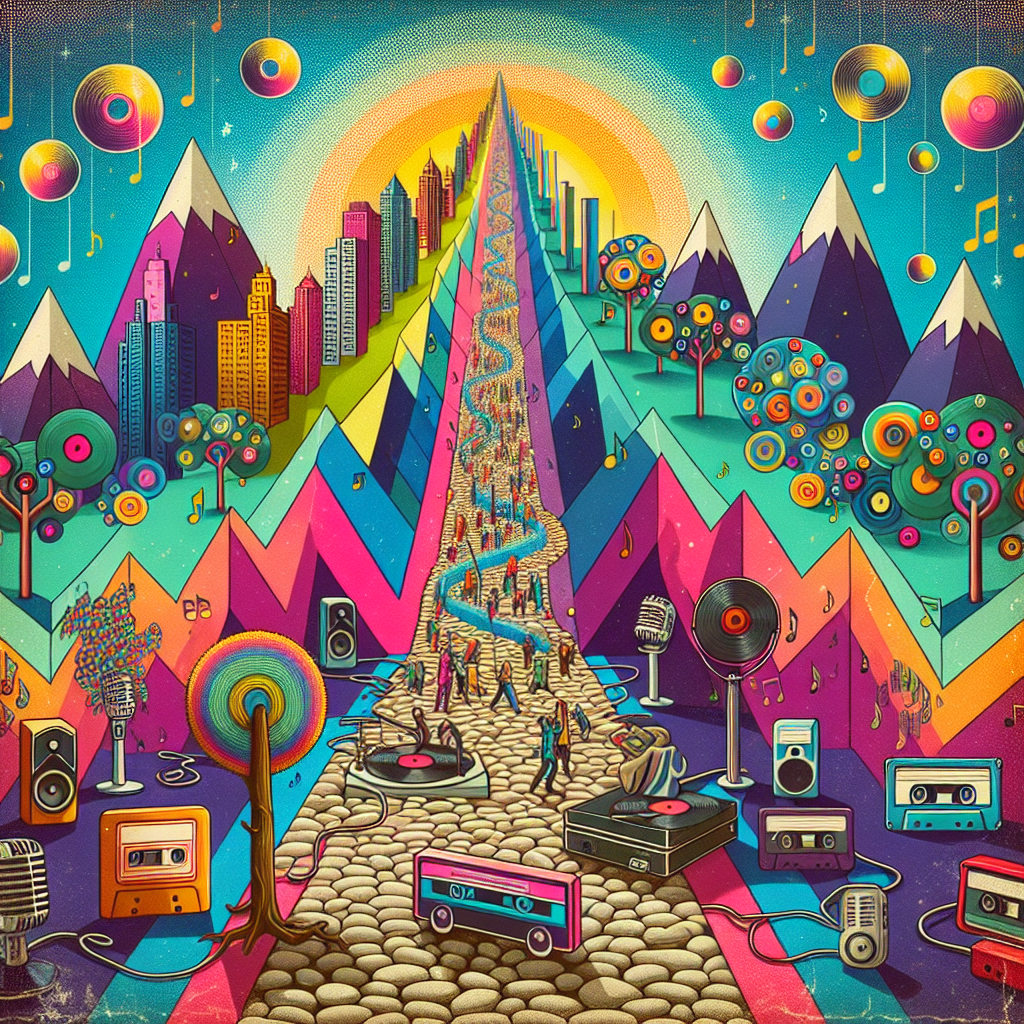The Rise of Indie Pop: A New Era of Chart-Busting Hits

Introduction
In an era dominated by vast music labels and mainstream pop icons, indie pop has emerged as a transformative force, driving an unprecedented wave of creativity and authenticity in modern music. Blending catchy melodies with sincere lyricism, the genre has garnered a massive following, taking over music charts and reshaping listeners’ preferences. The rise of indie pop signifies more than just the success of independent artists; it embodies a shift in the music industry, challenging traditional norms and offering a platform for diverse voices.
Historical Context
The roots of indie pop can be traced back to the 1980s, a time when independent record labels began to flourish, providing artists an alternative to major label constraints. Bands like The Smiths and R.E.M. pioneered a DIY ethos, releasing music that resonated deeply with niche audiences. Their influence laid the groundwork for a new generation of musicians who sought to convey personal and relatable stories through their music.
The 1990s saw the emergence of Britpop and lo-fi indie rock as prominent subgenres, with bands like Oasis and Pavement gaining traction. However, it was the 2000s that truly marked the rise of indie pop as a force to be reckoned with. The digital revolution, particularly the rise of social media and streaming platforms, democratized music distribution. This technological shift allowed independent artists to connect directly with fans, bypassing traditional gatekeepers like record labels.
See Also: Dancefloor Dominators: The Top Pop Songs Keeping Us Moving This Year
Dancefloor Dominators: The Top Pop Songs Keeping Us Moving This YearBy the late 2000s and early 2010s, indie pop was firmly entrenched in popular culture, driven by hits like “Young Folks” by Peter Bjorn and John and “Dog Days Are Over” by Florence + The Machine. The genre continued to diversify and evolve, attracting a larger audience while maintaining its roots in authenticity and innovation.
Key Artists
Several artists have played pivotal roles in the rise of indie pop, shaping its sound and broadening its appeal.
1. Vampire Weekend
Emerging from New York City in the late 2000s, Vampire Weekend burst onto the scene with their self-titled debut album in 2008. Their unique blend of world music influences and sophisticated lyrics resonated with listeners, leading to chart-topping success. Albums like "Contra" and "Modern Vampires of the City" showcased their evolution, pushing the boundaries of indie pop while maintaining catchy hooks and clever storytelling.
See Also: Viral Hits: The New Formula for Success in the Age of Short-Form Content
Viral Hits: The New Formula for Success in the Age of Short-Form Content2. Tame Impala
Led by Australian musician Kevin Parker, Tame Impala's psychedelic take on indie pop transformed the genre’s soundscape. With albums like "Lonerism" and "Currents," Tame Impala captured critical acclaim and commercial success, showcasing Parker’s skill in blending vintage sounds with contemporary production techniques. Hits like “The Less I Know The Better” reflect an introspective lyrical style wrapped in infectious melodies.
3. Lorde
New Zealand singer-songwriter Lorde exploded into the mainstream with her breakout single “Royals” in 2013. Her debut album, “Pure Heroine,” earned accolades for its minimalist production and relatable themes, providing a fresh perspective on teenage angst and suburban life. Lorde’s unique voice and approach have cemented her as one of the defining figures of the modern indie pop landscape.
4. Phoebe Bridgers
See Also: Chart Toppers: The Evolution of Modern Pop Hits in the Streaming Era
Chart Toppers: The Evolution of Modern Pop Hits in the Streaming EraEmerging from the DIY music scene, Phoebe Bridgers has quickly become a prominent figure in indie pop. Her emotive songwriting and haunting melodies resonate with listeners, as seen in her critically acclaimed albums "Stranger in the Alps" and "Punisher." Bridgers’ artistic integrity and vulnerability have made her a voice of her generation, showcasing how indie pop continues to evolve.
Current Trends
The current indie pop landscape showcases a fusion of sounds and styles, with artists drawing inspiration from various genres. Fusing elements of pop, rock, electronic, and even hip-hop, indie pop is continuously expanding its boundaries. Notable trends include:
Collaboration and Genre Blurring: Many indie pop artists are collaborating with musicians from other genres, creating compelling cross-genre tracks. Such collaborations have resulted in innovative and genre-defying music that challenges traditional categorizations.
Social Media Influence: Platforms like TikTok have significantly influenced the trajectory of indie pop careers. Viral challenges and trends can propel songs to the top of the charts overnight, enabling unknown artists to gain recognition almost instantaneously.
- Thematic Exploration: Contemporary indie pop often tackles themes of mental health, identity, and socio-political issues. This thoughtful approach allows artists to connect deeply with audiences while maintaining the genre’s signature introspective quality.
Cultural Impact
The rise of indie pop has significantly impacted the music industry and culture at large. Firstly, it has opened doors for diverse voices, allowing artists from underrepresented communities to gain visibility. The genre champions authenticity over commercial success, leading to a richer and more nuanced music scene.
Moreover, the indie pop movement has shifted audience expectations of what popular music can represent. Fans now seek vulnerability, storytelling, and relatability from their favorite artists, reshaping the criteria for chart success. The appreciation for artists who self-produce creates an environment where innovation flourishes, fostering a community that values artistic expression.
See Also: Pop Perfection: The Must-Listen Artists Shaping Today's Music Scene
Pop Perfection: The Must-Listen Artists Shaping Today's Music SceneConclusion
The rise of indie pop heralds a new era of chart-busting hits that are both commercially successful and creatively rich. Challenging industry norms and celebrating authenticity, indie pop reflects the desires of a generation craving unique voices and meaningful narratives. As listeners continue to embrace this genre, its significance within the broader cultural context will only grow, cultivating a space for experimentation and expression that resonates far beyond the charts.
FAQs
What is indie pop?
Indie pop is a genre of music that emphasizes melodic and accessible songwriting, often with an emphasis on independence and creative control away from major record labels.
How did indie pop become so popular?
See Also: The Rise of Indie Folk: How a Genre Redefined Acoustic Sounds
The Rise of Indie Folk: How a Genre Redefined Acoustic SoundsThe rise of social media, streaming platforms, and DIY music production has made it easier for independent artists to reach audiences directly, significantly contributing to the popularity of indie pop.
Who are some notable indie pop artists?
Notable indie pop artists include Vampire Weekend, Tame Impala, Lorde, and Phoebe Bridgers, each significantly influencing the genre’s sound and direction.
What themes are commonly explored in indie pop?
Common themes in indie pop include mental health, relationships, identity, and socio-political issues, allowing artists to connect deeply with their listeners.
See Also: From Viral Hits to Chart Success: The Evolution of Today's Pop Music
From Viral Hits to Chart Success: The Evolution of Today's Pop MusicCan indie pop be considered mainstream now?
Yes, many indie pop artists have achieved mainstream success, evidenced by chart-topping hits and sold-out tours, while still retaining their independent spirit.
If you want to know other articles similar to The Rise of Indie Pop: A New Era of Chart-Busting Hits you can visit the category Pop.
